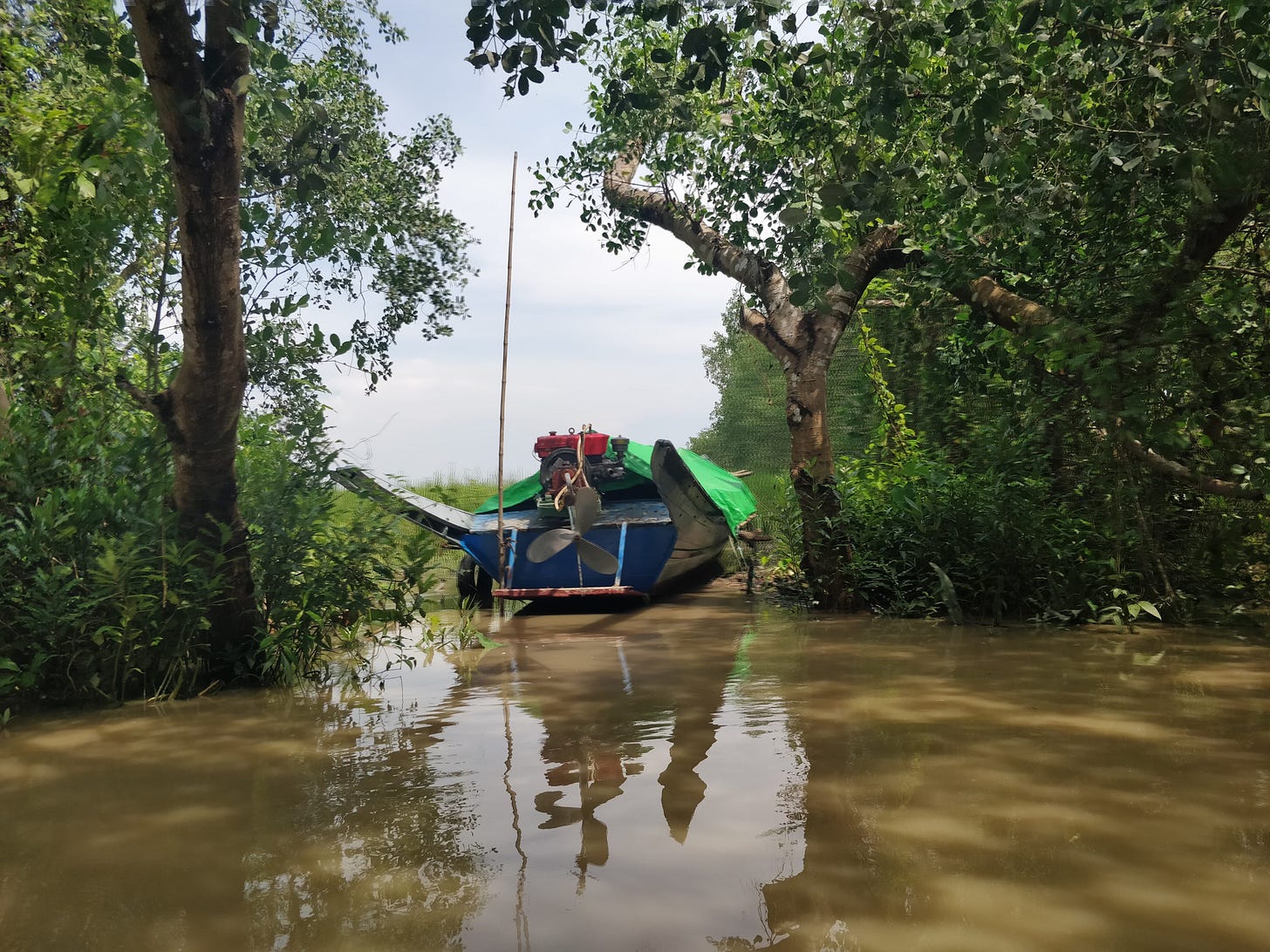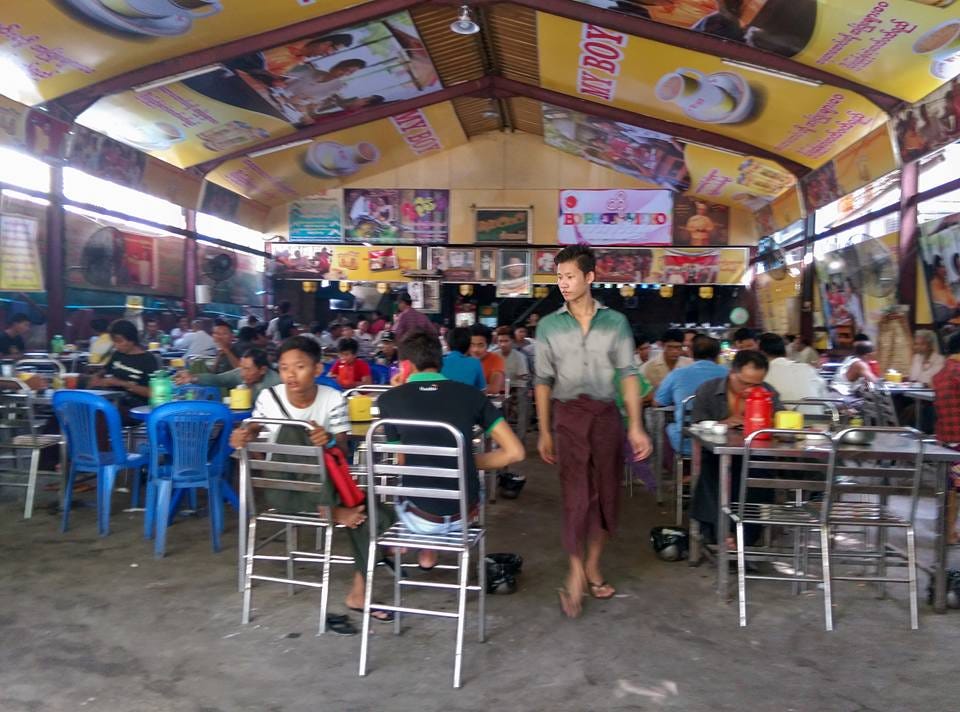Hidden Figures
A newsletter about food systems, climate change and everything connected to them
Hidden hunger in Myanmar
Remember that Southeast Asian nation where I came from? The one ruled by a brutal military dictatorship for nearly half a century until it burst into the world’s stage in 2011? Yeah, the one that is again under direct army rule following a Feb 1 coup.
Much of international media has moved on but for those still calling Myanmar home, the violence and trauma have only escalated, compounded by a devastating third wave of COVID-19 that led to oxygen shortages and countless unnecessary deaths.
I guess it is to be expected that the situation will deteriorate - we are talking about a ruthless military machine that is intent on breaking its own people - but that doesn’t make it any less heartbreaking.
This week, The New Humanitarian published a piece I wrote on food insecurity in Myanmar’s key agricultural zones. The central Dry Zone and the Ayeyarwady Delta are where the country’s pulses and rice are grown and represent about 80% of cropped areas.
They are also major population centers - about a quarter of the country’s population is believed to reside in the Dry Zone that covers multiple regions while Ayeyarwady Region accounts for 12%. So we’re talking about a third of Myanmar’s residents.
What I found, based on interviews with farmers, aid workers and academics, is a dire situation that is worrying not only for those who are directly affected but also has repercussions for the rest of the country’s food insecurity.
Many have been selling things like cows and jewelry so they can buy food and essential goods and cutting back on what they grow, how much they grow and how they grow. In aid agency lingo, these are “negative coping strategies”, when families are so desperate they sell long-term assets to meet short-term, immediate needs.
“We can’t get loans or borrow money, which means you have to sell what you have. So we have to be very frugal,” a farmer told me.
“Everything is more difficult this year.”
On top of this, they also have to deal with a fast-moving pandemic and trigger-happy men with guns. Yet these two areas are under the radar of most aid groups because they fall outside of what is traditionally considered conflict zones.
The story came about because of a few sentences in a briefing paper by the International Food Policy Research Institute (IFPRI) that was published a few months ago. The paper, which I covered in a previous issue of this newsletter, warned of rising poverty in these areas and urged humanitarian agencies to provide food aid. I hope they listen.
Farm to Fork
This week, the European Parliament voted to endorse a report on the EU Farm to Fork Strategy, known as F2F, by a wide margin (452 out of 699). F2F is at the heart of the EU Green Deal to make the powerful regional bloc more environmentally-friendly in all its dealings, from industry and energy to food and transportation.
The vote is symbolic but crucial - while it is not legally binding, it is a massive boost to green groups and sets the tone for transforming the European food and farming systems.
And it is all the more remarkable because of the amount of behind-the-scenes lobbying that was going on in the lead up to the vote from groups with an interest in keeping the status quo. These range from agribusiness lobbies and petrochemical companies to pharmaceuticals and meat-packing giants and they raised concerns around things like binding targets to reducing the use of pesticides.
There were counter proposals from the private sector that groups like Slow Food and Action Aid said would weaken the strategy. Ultimately though these were rejected, and according to Slow Food, the strategy that was voted through includes:
Binding targets to reduce food waste and losses, the use and risk of pesticides, fertilisers and antimicrobials, and on the uptake of organic agriculture.
Incentivising and rewarding farmers who farm in a way that protects and preserves biodiversity such as through agroecology.
Taking a systematic and evidence-based approach to facilitate creating healthy, sustainable, and fair “food environments” instead of relying on voluntary commitments
Changing current food production and consumption systems to prevent the spread of future zoonotic diseases, and in favour of phasing out the use of cages in animal farming.
Again, the folks at Lighthouse Reports, together with Deutsche Welle, Follow the Money, Mediapart, Domani and IRPI Media, did some digging to bring some of the lobbying to light. You can find a list of the stories these outlets did in this thread.
If you don’t want to use DeepL - they’re better than Google Translate, you’re welcome! - the story from DW is in English and you might see a familiar name.
Madeleine Coste, Slow Food Europe policy officer said in the statement: “The recognition of the need to significantly improve food environments by the European Parliament is an important step in the right direction – it is high time that we stop blaming consumers for making individual unhealthy and unsustainable food choices, and instead take the needed policy actions to render these choices the most accessible, affordable, and pleasurable.”
Salty Soil Map
I’ve banged on about the importance of soils in this newsletter many times so I can’t pass up the opportunity to talk about a new map that identifies soils that suffer from salinity issues.
Why is salinity bad for the soil?
Well, first off, they can make soils less fertile, which will in turn reduce crop productivity. Salt-affected soils also reduce water quality and soil biodiversity while increasing soil erosion, according to the FAO, the UN food and agri agency which launched the Global Map of Salt-Affected Soils this week.
According to the map, there are more than 833 million hectares of salt-affected soils around the globe or 8.7% of the planet. Most are found in naturally arid or semi-arid environments in Africa, Asia and Latin America.
But the map also shows that 20% to 50% of irrigated soils in all continents are too salty which means “significant challenges in growing food due to soil degradation”, according to the press release. These soils could feed more than 1.5 billion people.
FAO says the map will allow experts to identify where sustainable soil management practices should be adopted to prevent salinisation and sodification and to manage salt-affected soils sustainably and inform policy makers when dealing with climate change adaptation and irrigation projects.
What can cause soils to become salt-affected? A variety of reasons including human mismanagement, excessive use of fertilisers, deforestation, sea level rise, seawater intrusion into groundwater that is then used for irrigation. And this can happen really fast, according to the FAO.
“Clmate change is also raising the stakes, with models suggesting that global drylands could expand by as much as 23% – mostly in developing countries - by the end of the century,” the agency said.
As always, have a great weekend! Please feel free to share this post and send tips and thoughts on twitter @thinink, to my LinkedIn page or via e-mail thin@thin-ink.net.







